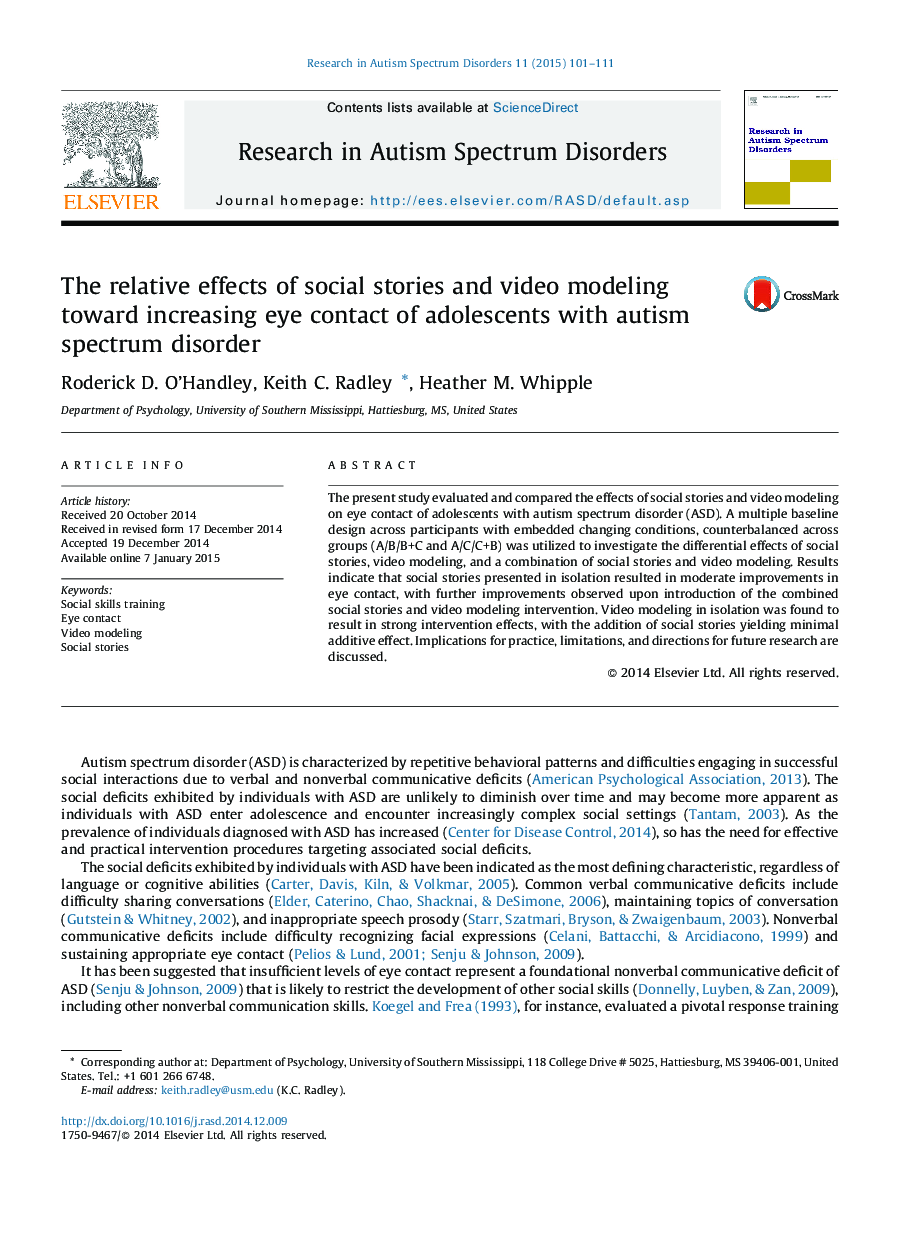| Article ID | Journal | Published Year | Pages | File Type |
|---|---|---|---|---|
| 370009 | Research in Autism Spectrum Disorders | 2015 | 11 Pages |
•Social stories resulted in moderate improvements in eye contact.•Video modeling resulted in strong improvements in eye contact.•A combined intervention improved effects of social stories alone, but did not improve effects of video modeling.•Results indicate that practitioners should consider video modeling for addressing deficits in eye contact.
The present study evaluated and compared the effects of social stories and video modeling on eye contact of adolescents with autism spectrum disorder (ASD). A multiple baseline design across participants with embedded changing conditions, counterbalanced across groups (A/B/B+C and A/C/C+B) was utilized to investigate the differential effects of social stories, video modeling, and a combination of social stories and video modeling. Results indicate that social stories presented in isolation resulted in moderate improvements in eye contact, with further improvements observed upon introduction of the combined social stories and video modeling intervention. Video modeling in isolation was found to result in strong intervention effects, with the addition of social stories yielding minimal additive effect. Implications for practice, limitations, and directions for future research are discussed.
